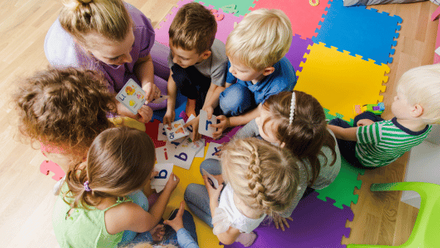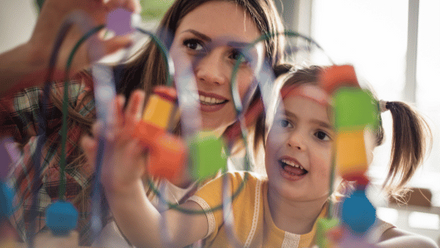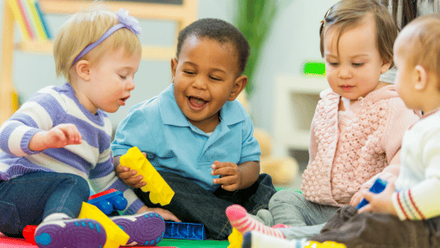Meeting communication needs for inclusive education
Children are communicating with us from the moment they are born. They are sharing their needs and thoughts with us from their first breath, their first scream – and they never stop. Developing strong communication methods is core to finding our place in the world, learning to navigate life with others and finding our sense of self. Whether verbal, written or non-verbal all communication is valid, and key to understanding more about us and others. Children with special needs education can sometimes face additional barriers to developing effective communication skills. As early education and care professionals, creating an inclusive and accessible environment for all children is paramount to the work we do.
Developing key strategies for supporting children with accessing learning opportunities starts with communication, so let's take some time to explore how we can support children with special educational needs in their communication.
What do we mean by communication needs?
Communication needs can take a variety of forms and with young children it can be difficult to identify when support is needed. Providing an effective universal provision allows us to create a friendly environment for all children and can make it easier to appreciate when individual children require additional help, known as targeted support.
But what might communication needs look like? Special needs education covers a wide range of conditions and access needs so the ways in which it impacts children’s communication will vary significantly too. For example, some children with hearing or speech impairments might struggle to pronounce words and be understood verbally by other children. Meanwhile, children with sensory processing needs could be impacted by loud noises and group communication over 1-1 engagement.
It's important to remember that all children communicate in different ways. If a child is choosing to make that communication, it is because they want to convey something that is important to them. For some children with special needs education, a lack of understanding for their communication needs can lead to distressed behaviour and frustration that is often misconstrued as ‘bad’ behaviour.
Taking the time to understand individual children’s unique communication and implement relevant support strategies not only creates a safe space for children to be heard but also negates additional stress caused by being misunderstood. When it comes to wellbeing, empowering children to feel their voice is heard allows them to share worries and anxieties with us too.
How to support communication needs
Using a total communication approach
Every child’s needs are different and responding to their unique needs is an indispensable responsibility of working with young children. The total communication approach is about finding and using the right combination of communication methods for each person. Just as children will communicate with us in a variety of ways, we have a plethora of resources at our disposal to align our methods with their needs. By exploring different communication techniques and trialling a combination with each unique child, we can aim to not only suit their needs but maximise their learning in the same moment.
So, mix it up! How could you use the following methods together?
- Using Makaton to sign key words in your short phrases to further support the understanding of key vocabulary.
- Engaging with children in small, quiet groups or ensure 1-1 time to support children who struggle to participate in loud environments.
- Making sure your lips are visible to allow children to lip-read and better develop an understanding of speech and sound production.
Visual aids
Did you know we have seven senses? When communicating with others, we usually focus on teaching and learning through auditory processing but why not use all our senses to develop vocabulary and communicate with others? Visual aids are a great way of demonstrating meaning, consolidating knowledge and expanding our learning opportunities through what we can see. Visual timetables and now/next boards are not only a good way to highlight sequencing and communicate a lot of information in an accessible way but are also supportive for children who struggle with changes to routine.
Environmental considerations
Simple changes to the learning environment can make big differences to communication for children with special educational needs. Children with sensory processing differences might struggle with aspects of the environment that would otherwise go unnoticed. Bright lights, multiple sounds, loud volumes or low-level disruption noises like buzzing or humming can all make a seemingly accessible environment entirely incomprehensible.
Close your eyes and take in the full environment – what can you hear, smell, feel? For children with sensory processing needs, every aspect is magnified and should be considered for their potential barriers. For example, low-level music might seem like a welcoming, uplifting addition to the room but, when layered with voices and everyday play, it can often become an additional sound to try and block out. Other environmental considerations might include how a space is split up into different areas or how stimulating the colours are on displays around the room.
Key Takeaways
Supporting children to communicate with others is an important part of our role within early education and care but, in doing so, it is vital that we preserve the opportunity for every child to excel, regardless of their individual needs. Take the time to explore our member resources for more top tips for working with children with special needs education.





